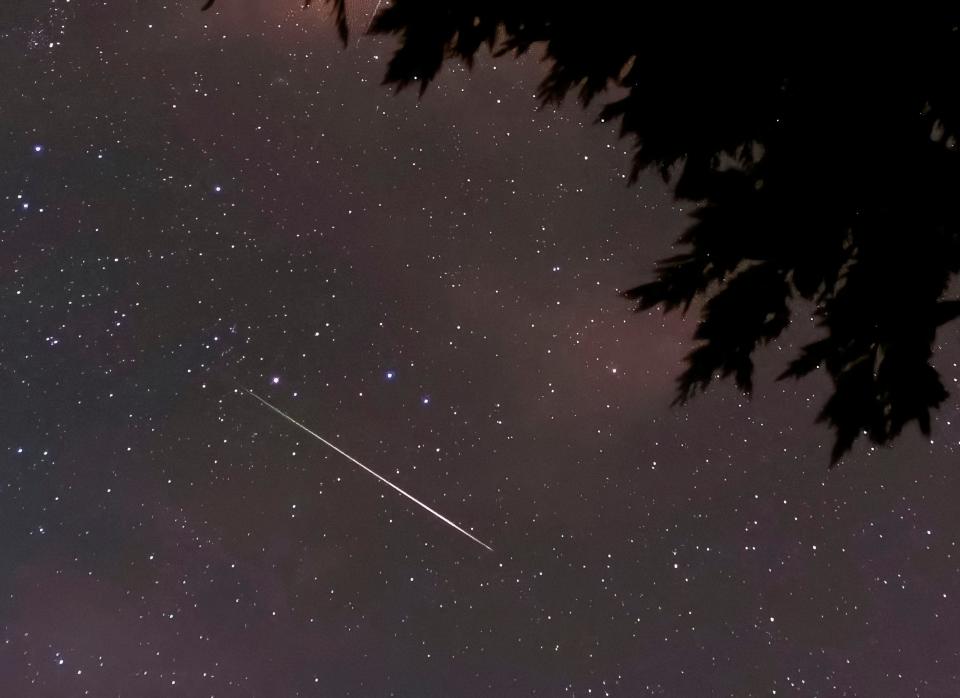Perseids meteor shower: Best time to watch in Nashville, Middle Tennessee and where to go
Fireballs of molten comet debris from Perseids meteor shower will radiate the night's sky, and soon Middle Tennesseans will witness one of the most impressive displays.
The Perseids meteor showers have been streaking past Earth's atmosphere since mid-July, and come Aug. 13, Nashville-area residents will be in peak position to see the showers whizzing by.
“People in the U.S. can reasonably expect to see around 40 Perseids in the hour just before dawn on the peak nights. That’s about one every couple of minutes, which is not bad,” Bill Cooke, NASA’s Meteoroid Environment Office, said in a NASA blog. “However, we are assuming you are out in the country, well away from cities and suburbs.”
More: Meteor shower season kicks off with Lyrid shower in April
But the brighter the sky, the harder it becomes to see the bursts of light in the sky. So you will need to get out of the cities and suburbs if you want to watch.
The Perseids is often considered the best meteor shower thanks to its volume and the moon's waning crescent creating a dark sky and optimal shower viewing.
What is a meteor shower?
Meteors are pieces of space debris left over from comets or asteroids that interact with our atmosphere when Earth passes through the debris trails left from comets coming around the sun, according to NASA.
The streak is not actually the rock, though, it's the glowing hot air trail as the rock moves through the atmosphere.
When Earth experiences several meteors at once, it is called a meteor shower.
Where to see the Perseids meteor shower in Middle Tennessee?
Long Hunter State Park, 2910 Hobson Pk., Nashville
Bledsoe Creek State Park, 400 Zieglers Fort Road, Gallatin
Edgar Evans State Park, 1630 Edgar Evins State Park Road, Silver Point
When is the best time to see the shower?
On Aug. 13, the best time to see the meteor shower will be when the sun sets at 6:32 p.m., according to the farmer's almanac. It will be visible until dawn.
NASA recommends people watch the meteor shower in an area far from city lights or streetlights and prepare for comfortable viewing by bringing a sleeping bag, blanket or lawn chair.

They suggest people lie flat on their backs with their feet facing east, then look up and view as much of the sky as possible. After about 30 minutes in the dark, peoples' eyes will adapt and begin to see meteors.
Why does Earth get meteor showers?
Meteor showers happen each year. But why?
According to NASA, comets orbiting the Earth lose some of its icy surface as it boils in the sun. That comet debris gets thrown around the comet's path and when the Earth makes it's journey around the sun, it's orbit crosses paths with a comet, putting in the right in the path of all that comet debris.
Can you get hurt?
No need to hit the storm shelters, meteoroids usually range from small dust particles to boulder size. They are often so small, they burn up as they enter the Earth's atmosphere. But what's left is an awe-inspired show in the sky.
The Perseids is not the only meteor shower throughout the year.
Orionids will light up the sky in October, Leonids in November, Geminids in December, Quadrantids in December and January and Lyrids in April.
Reach reporter Craig Shoup by email at cshoup@gannett.com and on Twitter @Craig_Shoup. To support his work, sign up for a digital subscription to www.tennessean.com.
This article originally appeared on Nashville Tennessean: When and where to watch Perseids meteor shower in Nashville, TN area

